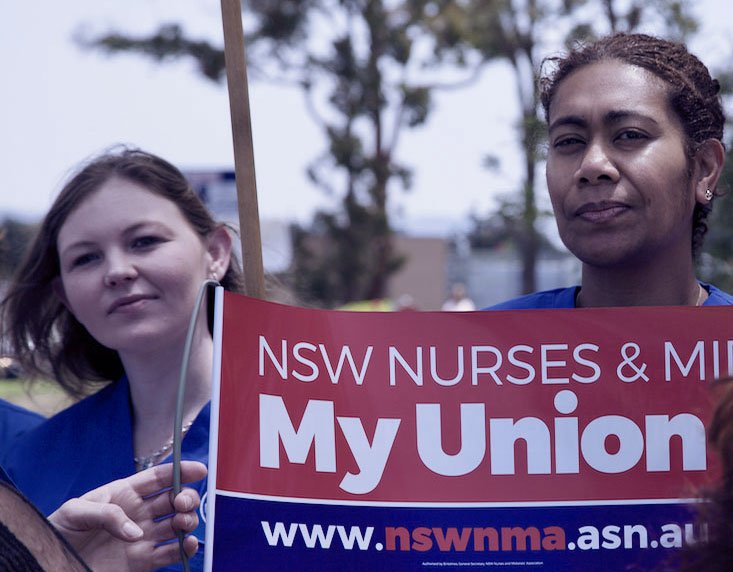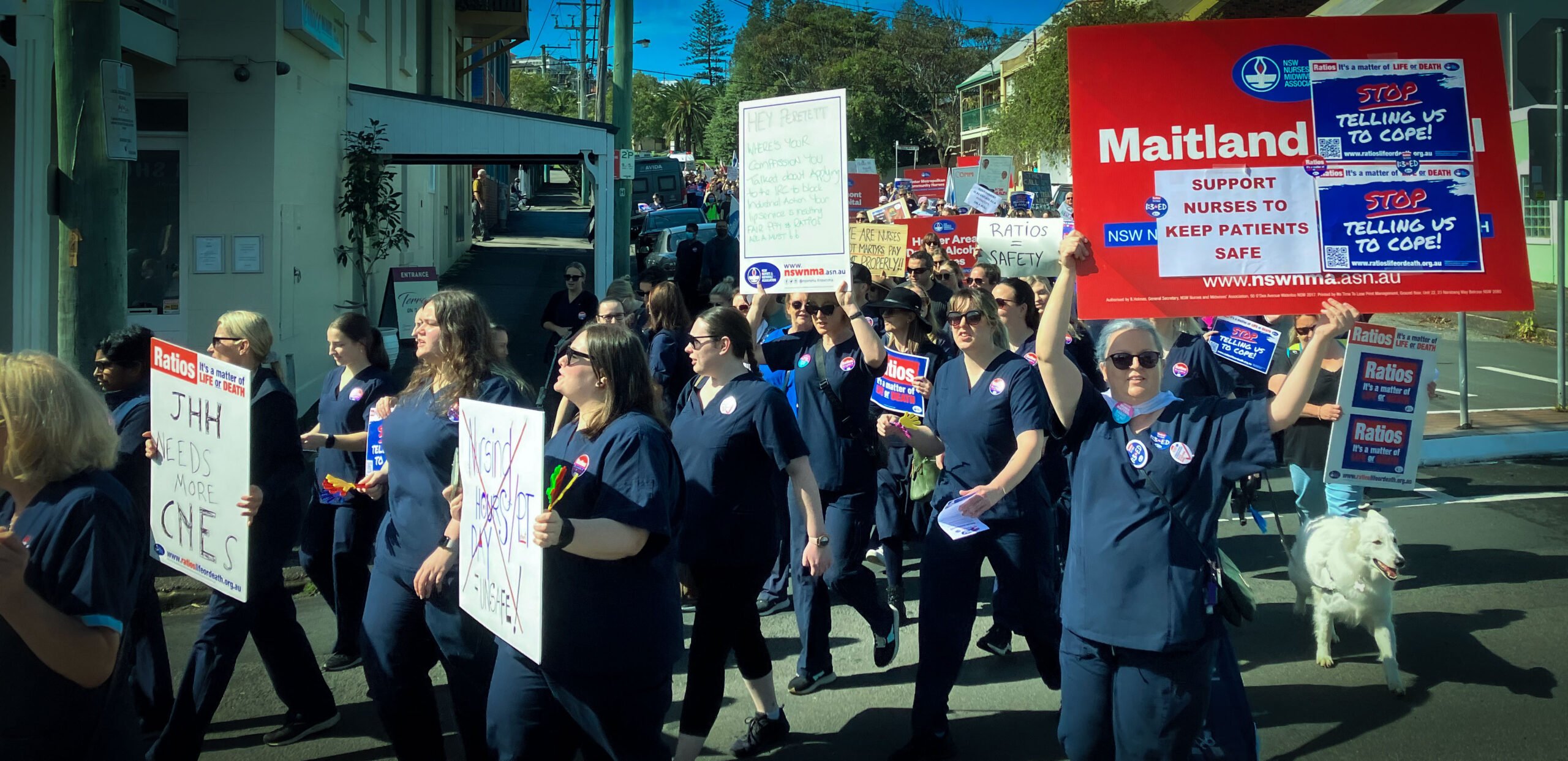Following a nine-month campaign Victorian nurses and midwives have stopped the Baillieu Government replacing nurses with health assistants, saved the state’s unique nurse/midwife patient ratios, achieved some improvements to ratios and secured increased money between 14 and 21 per cent.
Thousands of public sector nurses and midwives this afternoon voted to accept a new agreement with the Baillieu Government at a statewide meeting at Festival Hall in West Melbourne. The agreement was reached at midnight last night through negotiations in Fair Work Australia with the assistance of Commissioner Gooley. The four-year agreement will expire on 31 March 2016.
Australian Nursing Federation (Victorian Branch) Secretary Lisa Fitzpatrick said: “This is a bitter sweet victory for nurses and midwives after an unprecedented industrial marathon with the Baillieu Government to protect patient care and secure a fair pay rise.
“Health assistants will not replace nurses as part of the ratios and hospitals will not be introducing unlimited four-hour shifts or split shifts,” Ms Fitzpatrick said.
“Patients admitted to rehabilitation wards will now benefit from an improved nurse patient ratio from 1 to 7 on the evening shift to 1 to 5 in recognition of the enormity of nurses’ workloads in this speciality,” she said.
“ANF has also secured annual funding to work towards a 1 to 3 ratio in day oncology units,” she said.
The significant pay rises of between 14 and 21 per cent include an annual percentage increase as well as the introduction of a substantial professional development allowance.
“For the first time nurses and midwives have secured a new annual allowance to assist with the recent changes to their annual re-registration professional development obligations with the Nursing and Midwifery Board of Australia. The first allowance to be paid to all nurses and midwives on the first pay period on or after 31 March will be $1000 and then $900 in subsequent years,” she said.
Some examples of what nurses and midwives will earn over the life of the four-year agreement are:
- A full time enrolled nurse pay point 4 (three years experience) currently earns $45,214 per annum and by the end of the four-year Agreement an enrolled nurse pay point 4 will earn $53,601, an increase of 18.54%. The first increase under the Agreement is equivalent to 4.71%.
- A full time graduate nurse currently earns $48,729 per annum and by the end of the four-year Agreement a graduate nurse entering the profession will earn $57,485, an increase of 17.95%. The first increase under the Agreement is equivalent to 4.55%.
- A full time Grade 2, Year 8, registered nurse currently earns $61,547 per annum and by the end of the four-year Agreement will earn $71,633, an increase of 16.38%. The first increase under the Agreement is equivalent to 4.12%.
- A full time Associate Nurse Unit Manager, Year 1, currently earns $70,236 per annum and by the end of the Agreement will earn $81,225, an increase of 15.64%. The first increase under the Agreement is equivalent to 3.92%.
- A full time Nurse Unit Manager, Year 1, currently earns $82,201 per annum and by the end of the Agreement will earn $94,432, an increase of 14.76%. The first increase under the Agreement is equivalent to 3.71%.
Night duty penalty rates have been simplified by having only one single rate and the rate will double to $50.40 with further increases during the life of the four-year agreement.
“ANF has also negotiated a new career structure for enrolled nurses recognising the significant changes in enrolled nurse education and their broader medication administration scope of practice introduced over the last four years,” Ms Fitzpatrick said.
“An important simplification for the hospital payroll and HR is the merging of entitlements and enrolled nurses will now have the same entitlements as registered nurses which will include an additional week of annual leave as well as access to exam leave for many nurses,” Ms Fitzpatrick said.
In a vital win the agreement includes Victoria’s 38 stand-alone community health centres, the Queen Elizabeth Centre, Tweddle Child and Family Health Service, Jacaranda Village in Red Cliffs, Darlingford Upper Goulburn Nursing Home in Eildon, Lyndoch Living in Warrnambool, Mallacoota Health and Support Services and Indigo North Health in Rutherglen and Chiltern. The Baillieu Government tried to exclude all of these services from the agreement for the first time.
Productivity offsets include a revised clause 43 which enables employers to staff below ratios in very limited circumstances based on consideration of the consequences of strict criteria including patient acuity, nurses’ satisfaction and nursing sensitive outcomes such as falls, urinary tract infections, pneumonia, decubitus ulcers, thrombosis, sepsis and medication errors.
Hospitals can now use a skill mix of 20 per cent enrolled nurses in medical and surgical wards which is an increase from 15 per cent in the 2007 agreement. The remaining nurses are registered nurses.
“It has been important to know that nurses and midwives were not alone in their fight to protect patient care on their own. Thank you to the hundreds of thousands of people who called or emailed the ANF, posted supportive messages via our Facebook page and Twitter, wrote letters to the newspapers, called talkback radio, signed our petition, attended a rally or stoppage and generously donated to the hardship fund and opened their doors when we door knocked in Bentleigh,” Ms Fitzpatrick said.
“This victory is bittersweet because it will take a long, long time before the Baillieu Government earns back the respect of nurses and midwives. It should not take nine months to convince a State Government that its job is to protect patient care and improve patient care.
“The Baillieu Government was naïve and ill advised when it embarked on a campaign to end mandated minimum nurse/midwife ratios. It was naïve and ill advised when it was told flexibility was needed to meet patient peaks and troughs which of course are unpredictable. It was naïve and ill advised when it was told it could replace nurses with health assistants and expect the same standard of patient care,” she said.
“Since October more than 2000 nurses and midwives have joined the ANF union and I have seen the birth of more than 1000 activists who are very keen that this Government is only in power for one term,” she said.
“The Baillieu Government has politicised a new generation of nurses and ensured that there will be red t-shirt clad nurses and midwives at every polling booth on 29 November 2014 reminding voters that this Government wanted to substitute nurses with a three-year degree with health assistants who had three months training,” she said.
Campaign statistics
9 months since negotiations started
128 days since conciliation in Fair Work Australia started
8 statewide meetings
14 days of industrial action involving bed closures (12 November 2011 to 25 November 2011)
700 hospital beds closed during the peak of the nurses’ industrial action in November
1516 hospital beds closed by the Baillieu Government (between 23 December 2011 and 25 January 2012)
3452 nurses, midwives and mental health nurses signed resignation authorities
35 community rallies
10,000 protesters at the march to save nurse/midwife ratios from Bourke Street to Spring Street (Thursday 24 November 2011)
1 international protest in New Dehli, India
100 hospital meetings to discuss resignations
15 hospitals involved in rolling stoppages over 14 days (24 February and 7 March 2012)
2000 nurses and midwives involved in stoppages each day during the industrial action
110,000 signatures on the petition to Premier Baillieu to save, improve and legislate nurse/midwife ratios
29,500 people signed the change.org online petition to Premier Baillieu www.tiny.cc/online_petition
19,000 homes in the Bentleigh electorate doorknocked
5 ANF television commercials
3 ANF radio commercials
70,000 Respect Our Work t-shirts sold
2500 new ANF (Victorian Branch) members since November 2011
1000 new nurse and midwife activists







